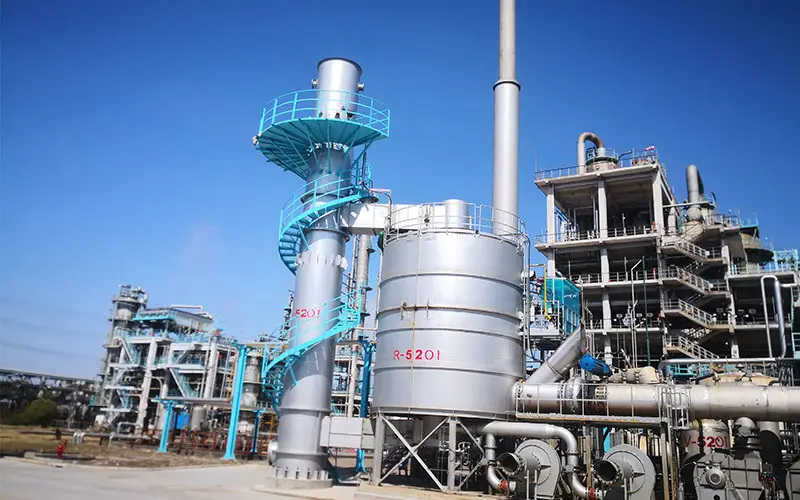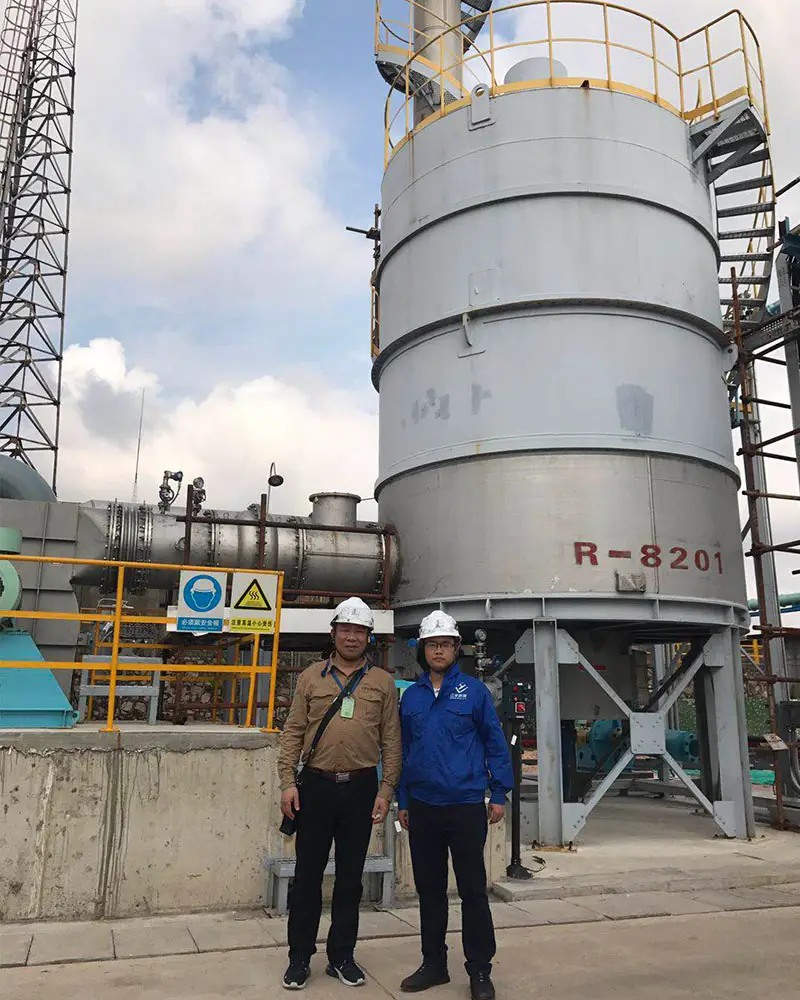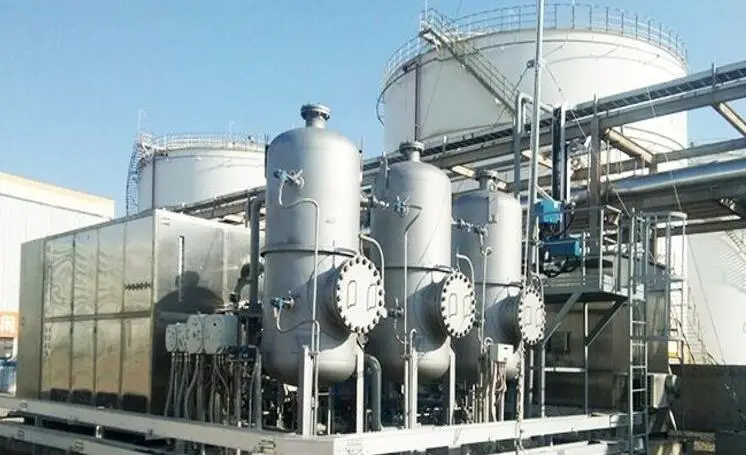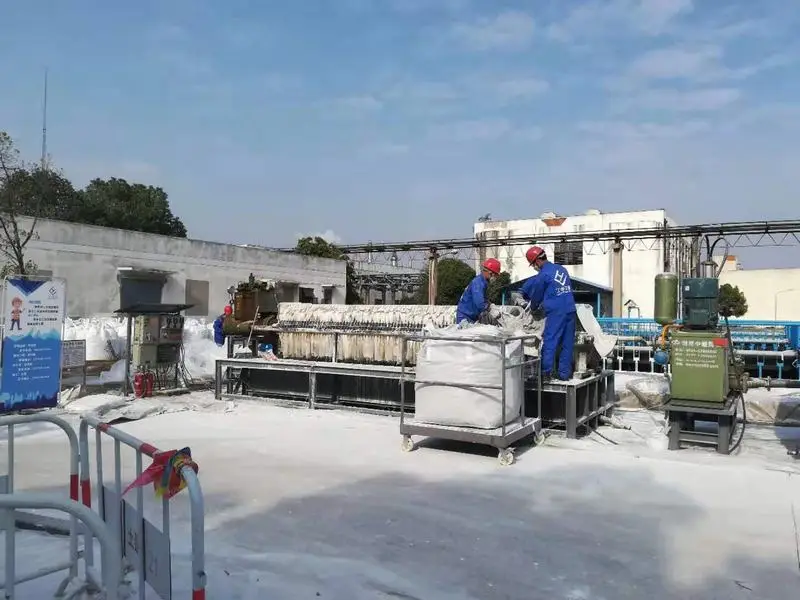Projects

Application of RV-RTO System in Sinopec Gaoqiao Petrochemical Phenol-Acetone Plant
The phenol-acetone plant of Sinopec Gaoqiao Petrochemical, located in Jinshan District, Shanghai, incorporates an RV-RTO system to treat various waste gases, including oxidation tail gas, loading/unloading emissions, tank breathing gas, and wastewater volatile organic emissions. By designing different safe intake methods for the waste gases, the RV-RTO system processes the emissions to achieve a total non-methane hydrocarbon discharge of less than 15 mg/m³, while maintaining low energy consumption.
The system accommodates waste gases with varying temperatures, pressures, and concentrations. Additionally, emissions from loading/unloading operations and storage tanks are intermittent and irregular. Given the stringent requirements for purified exhaust gas, Pingxiang Jianghua leveraged advanced sealing measures and chemical design expertise to develop an RV-RTO system that meets these demanding standards.
Since commissioning, the system has operated stably, consistently meeting emission standards during multiple inspections by regulatory authorities. As recognition for its outstanding performance, the Shanghai Municipal Government awarded the project a 5 million RMB reward.

Application of RV-RTO System in Sinopec Maoming Petrochemical Wastewater Treatment Unit
The wastewater treatment unit of Sinopec Maoming Petrochemical’s Water Division is located within the ethylene plant area in Maoming, Guangdong. The unit’s wastewater emits volatile organic compounds containing light hydrocarbons, benzene, toluene, and other substances. Through the RV-RTO system, the facility achieves total non-methane hydrocarbon emissions of less than 15 mg/m³, meeting Sinopec’s highest standards.
The wastewater treatment unit features multiple emission points at varying distances, with high concentrations of benzene compounds in the waste gas. Post-treatment benzene emissions must meet a stringent standard of 2 mg/m³, requiring the system to maintain a treatment efficiency of over 99.5%.
Leveraging years of research and improvements in RV-RTO sealing technology, Pingxiang Jianghua successfully ensured compliant exhaust emissions, meeting these demanding requirements.
Luctus nec ullamcorper mattis, pulvinar dapibus leo. Proin gravida nibh vel velit auctor aliquet

Oil Tank VOCs Treatment: “Condensation + Adsorption
This method combines condensation and adsorption technologies for the effective treatment of volatile organic compounds (VOCs) in oil tank storage areas.
1.Condensation: Reduces the VOC concentration by cooling the gas stream, causing heavier hydrocarbons to condense and separate from the vapor phase.
2.Adsorption: Further purifies the remaining VOCs using advanced adsorbent materials, such as activated carbon or molecular sieves, ensuring the emissions meet stringent environmental standards.
This dual-stage treatment effectively reduces VOC emissions, ensuring compliance with environmental regulations and improving air quality.

Non-Stop Sludge Removal from Sinopec Anqing Polymerization Wastewater Pool
This project is located in the wastewater pretreatment station area of the Acrylonitrile Division. Since the last desilting and maintenance in 2015, the wastewater pool at the acrylonitrile wastewater pretreatment station has been operating continuously for nearly four years. The 11a homogenization pool for acrylonitrile-containing wastewater has accumulated a large amount of sediment, impacting the effluent water quality of 11a.
Scope of Work
The project involves non-stop sludge removal for the 11a homogenization pool and the emergency pool of the polymerization wastewater pool.
Key Details:
•Volume of Sludge: Approximately 900 m³ from Pool 11a.
•Sludge Treatment: Sludge will be dewatered and bagged on-site by the contractor. Dewatered sludge will be loaded onto trucks, ensuring no leakage during transportation.
•Waste Disposal: The buyer will coordinate with certified hazardous waste disposal companies to remove the sludge in compliance with hazardous waste disposal procedures.
Process:
1.Flexible hoses will be placed into the wastewater pool.
2.Sludge will be pumped into a sludge dewatering press via slurry pumps.
3.Wastewater from the dewatering process will be discharged back into the wastewater pool through pipelines.
4.Dewatered sludge will be manually bagged, loaded onto trucks using forklifts or cranes, and transported offsite.
5.The site will undergo manual cleaning and washing before final inspection and acceptance.
This process ensures minimal disruption to operations while maintaining high environmental and safety standards.
